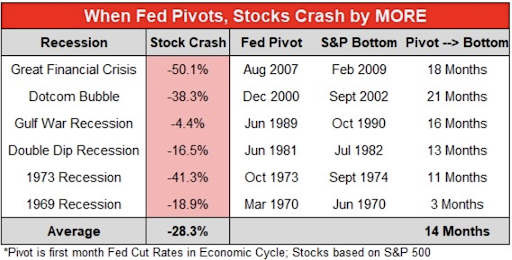With the holidays over, I’m getting ready for an important trip. My wife and daughter are heading to Hawaii for two weeks. Her best friend lives on the big island.
I’m using the two weeks to start writing a new book. I’ll travel to New York City and Chicago. There, I’ll lock myself in two notorious writing hotels and try to knock out the first 15,000 words of a story I should have written years ago. It’s a process. A tedious one.
When I travel to New York, I’ll also meet with a friend who runs a company that creates funds, and he’s interested in launching one around community banks.
Why would that make for an interesting fund? The same reason I’m buying up these stocks in 2023 and beyond…
Community Banks, a Love Story
Community banks are financial institutions that are often owned and operated by locals. They provide banking and financial services to their communities and make money the old-fashioned way — by lending money.
These banks are essential to the U.S. financial system and help local businesses access credit and capital. They range between market capitalizations of $50 million to $2 billion.
Community banks are great investments for a variety of reasons…
For starters, they rely heavily on personal relationships to succeed. They know their customers and they have skin in the game for the success of their local towns and communities. Due to the intimate nature of their customer knowledge, they can provide personalized services beyond the traditional role of a larger financial institution. This ability to build a loyal and stable customer base is critical in any economic environment.
Community banks also have strong balance sheets and operate in more conservative areas of credit. They’re sticklers for higher credit scores and know the values of collateral like land and buildings due to their local knowledge. Thanks to their more conservative approach, they’re less likely to face defaults, which is good for investors.
As you know, I have a community bank analyst in my father in law. And one of the key things we always discuss is the balance sheet. And there’s one key metric that we like to favor — tangible book value.
This is the measure of all the tangible assets on the balance sheet — cash, land, anything that can be sold without question. And our focus is on banks that trade for under a tangible book value of 1.
Why? Because if we’re buying banks that trade under their tangible book value, we can own something for less than the value of the stock if the bank went out of business.
Playing the Consolidation Trend
Banks trading under a tangible book value of 1 are clearly takeover targets. If a bank trades at 0.8 tangible book value, you can purchase it for 80 cents on the dollar. All you need to do is sit and wait for someone to purchase the bank — and deals often range from 1.5 to 2.0 times tangible book value during a takeover.
Consolidation in the community bank sector has been strong since the late 1980s. In 1987, there were more than 12,000 American community banks. Today, that number is a little more than 4,500. Banks aren’t going out of business…
They’re being bought by bigger banks.
And what’s driving this consolidation? A few key factors…
One of the most important is the need for deposits. There are two primary ways that a bank can increase deposits, which it uses for loans for other customers and small businesses.
They can first experience a dramatic increase in deposits due to demographic changes. Either the local population gets much wealthier and deposits money into the accounts, or there’s a larger population influx. For example, community banks in Texas and Florida have experienced an uptick in deposits due to customer migration from high-tax states in recent years.
The second way is to just buy a bank. That strategy of buying another bank can come in handy if you’re in a state or city that’s experiencing a decline in population.
What other trends are driving deal flow? There have been major regulatory changes over the decades. The Dodd-Frank Wall Street Reform and Consumer Protection Act in 2010, for example, imposed new regulatory burdens on smaller banks, making it more difficult for them to compete with larger banks.
Cybersecurity is also a major cost today for community banks. They can’t afford the exorbitant challenges associated with cyber thieves. Other major costs include the introduction of mobile applications and other tools and apps demanded by customers.
In addition, community banks tend to have older boards of directors. Young Americans don’t go to work for community banks in Omaha or Naples. They want to work for big banks in New York City or Chicago. This talent gap is another major challenge for smaller banks. And it’s a reason why they move to sell.
Consolidation isn’t going away. And deal flow will be rampant, especially on the backside of a recession. I’ve recently named my top play in the community banking space in Tactical Wealth Investor. The stock — in the next 24 months — has an 8% dividend and could have a potential upside of 161% by the end of 2024.
To your wealth,
Garrett
P.S. And don’t forget to let me know if you have any feedback, questions about today’s issue or anything else. Just email us at [email protected].
*This is for informational and educational purposes only. There is inherent risk in trading, so trade at your own risk.
Market Momentum Is Red.
Markets continued to struggle as capital rotation continues for funds. Tesla Inc. (Nasdaq: TSLA) remains under intense pressure as fund managers continue to dump the stock. I would pay very close attention for a short-term trade on TSLA when momentum turns positive in the coming weeks.




